Last updated: 29 July 2023
No visit to Poland can be complete without a trip to the capital, Warsaw. Fortunately for most of us, there are frequent flights which makes Warsaw an an easy and affordable destination. So Roma and I decided to make Warsaw the start and end point of our grand Polish adventure.
We stayed in Warsaw for 2 days which gave us a good amount of time to visit some of the most well-known sites. We could have easily have stayed longer because we thoroughly enjoyed experiencing life in Poland’s capital.
One of the reasons I love to travel is the opportunity to learn about history, culture, people, language, and food which made Poland the perfect destination. I have to admit that unlike some of our other travel destinations I didn’t really have a great understanding of Poland or what to expect during our trip. However, this turned out to be blessing in disguise because it just meant that every day I had the opportunity to learn something new (and I loved every minute of it).
What is there to see in Warsaw?
If you’re planning a visit to Warsaw and not exactly sure what to do or where to go, I hope that you will find the below list helpful with planning your day. Whether you have 24 hours or a couple of days, I hope that you enjoy Warsaw as much as we did
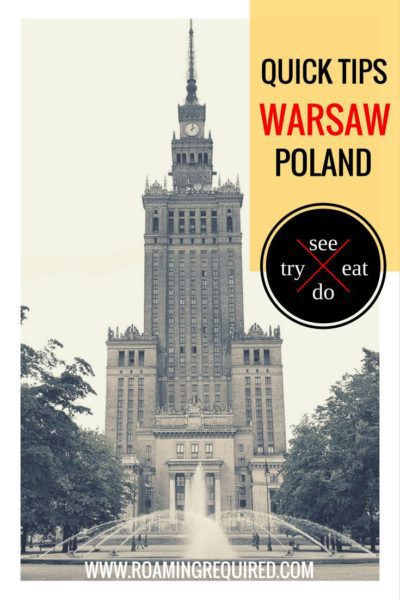
Here’s our Warsaw Top 9 Highlights
1. The Old Town
No visit to Warsaw can be complete without a stroll through the Old Town and luckily for all visitors, it’s smack bang in the middle of town. The good thing about heading towards the Old Town is that there’s no mistaking when you’ve arrived. You can spot the beautifully bright coloured buildings from a fair distance away.
Warsaw’s Old Town was added to the UNESCO World Heritage Site in 1980. The Old Town is the historical centre of Warsaw with the oldest part of the city dating back to the 13th century. An interesting fact when visiting is that over 90% of Warsaw was completely destroyed by the end of World War II so the Old Town was faithfully reconstructed in all its grandeur by 1957.
2. Polish Dumplings (Pierogi)
I hope you’re hungry because in Poland you’re going to be in food heaven with Pierogi, the traditional Polish dumpling. Ok, so technically these delicious dumplings aren’t specific to Warsaw but it was the first place we tried some and loved them so I had to include them in my highlights list.
Pierogi is considered to be a national dish in Poland so do yourself a favour and indulge, you won’t be sorry. We sampled a few varieties – meat, cheese & potato, potato & onions, and mushroom & meat.
Not sure which one to choose? Why not have them all! The best thing about having dumplings in Warsaw is that most restaurants are used to the influx tourists so there’s usually an option on the menu to order an assortment of dumplings.
3. Surprising Temporary History Exhibits
Sometimes when exploring a new city the best experiences are the surprises, the little things that you just don’t expect…
During our stay in Warsaw, we stumbled across two really interesting temporary exhibits which covered different aspects of the city’s history. Now, you know that if it has to do with history that I’m going to take some time to be like a sponge and soak up as much I can.
The first exhibit was a collection of display boards covering various aspects of Polish history, such as World War II & its aftermath, the Solidarity movement in Gdansk, the fall of the Berlin Wall and its impact on Communist regime worldwide.
We must have stood there for at least 45 minutes reading board after board of history, quite content in our own little world, not noticing the late night UEFA Eurocup revellers celebrating at local cafes in the Old Town Square.
The second surprise exhibit we came across in skwer ks Jana Twardowskiego park on our way to the Nicolaus Copernicus monument. There was a series of large black and white photographs of Warsaw displayed throughout the park.
The temporary exhibit was Dream About the City, Warsaw of the 1950’s and 60’s by photographer Zbyszek Siemaszko. The photos captured the time in Warsaw where reconstruction and new life were being breathed into the city following the death of Stalin.
The Dream About the City exhibition runs until 30th October 2016 in skwer ks Jana Twardowskiego park
4. Chopin Musical Benches
Did you know that one of the most famous composers of classical music, Frederic Chopin, was Polish and grew up in Warsaw? The city is mighty proud of this fact, as well it should be. Chopin’s influence on music is unquestionable as his works continue to inspire generations of classical music fans globally. Today, when visiting Warsaw you can book on a number of classical tours to learn about Frederic Chopin, his legacy, and of course his music.
If you visit Warsaw and you don’t have time to take part in a Chopin tour, then at least take a moment and rest those weary legs on one of these benches…and let Chopin reinvigorate your music spirit.
5. Prozna. The Scars of World War II
There is no doubt today Warsaw is a flourishing capital city complete with skyscrapers, a bustling business district, and a thriving tourist industry. It has come a long way from the horrors of World War II when the city was the scene of brutal fighting and destruction leaving over 90% of the entire city in complete devastation.
Did you know that there is a small quiet street in the middle of the city where the scars of World War II can still be seen? If you head towards the large Soviet-looking Palace of Culture and Science and turn right on Marszalkowska then you will find Prozna St.
If you start walking down the street and it doesn’t look like what you imagined it would, don’t worry. I remember reading about Prozna in our Lonely Planet but the description didn’t really match up with what we were seeing. The book spoke of old-style red buildings with well-worn facades of decades of Soviet living but what we saw were all relatively neat looking apartment blocks and restaurants.
Keep walking a little further. Once you reach the end of the street, you’ll see history from over 70 years ago.
There may only be a little section of the street left with it’s visible scars but it’s worth going to visit because soon enough this will inevitably be restored and replaced with another neat looking building.
6. Warsaw Jewish Ghetto Wall Markers
Whilst there are some amazing and beautiful places to visit in Warsaw, your trip shouldn’t conclude without a visit to the Jewish Quarter and the POLIN Museum of the History of the Polish Jews.
The Warsaw Jewish Ghetto was the largest of all Jewish Ghettos across Nazi-occupied Europe and it was here where 300,000 men, women, and children lived in squalor. Many died of starvation, disease, and over 250,000 were sent to the Treblinka extermination camp.
The visit to the POLIN Museum of the history of the Polish Jew (built on the site of the former Jewish Ghetto) was a sombre experience and we walked away with a much greater understanding of the history of the Jewish people and what horrors had occurred during World War II.
The reason why I’ve selected the Warsaw Jewish Ghetto wall markers as one of my highlights was because this was where history felt the most real to me. Standing in a museum reading from a plaque was interesting and well-worth going but standing on the exact spot where the walls of the largest Jewish Ghetto in Europe ran made my blood run cold and it all became very real to me.
7. Umschlagplatz Memorial
Following on from a visit to the POLIN museum and Jewish Ghetto, we took a walk a couple of blocks away to the Umschlagplatz Memorial, the site of the former platform/loading area where an estimated 300,000 Jews were transported from the Jewish Ghetto to the Treblinka extermination camp.
The monument was unveiled on the 18 April 1988, on the 45th anniversary of the start of the Warsaw Uprising. The design of the monument was what was most striking, built in the shape of an open freight car.
There is an inscription which reads;
Along this path of suffering and death over 300,000 Jews were driven in 1942-1943 from the Warsaw Ghetto to the gas chambers of the Nazi extermination camps
Set into the walls surrounding the inscription are the names of the 400 most popular Jewish male and female first names, each of the names representing 1000 victims.
It was a haunting experience and one that I will never forget visiting.
8. Monument to the Fallen and Murdered in the East
This is another example of why you should just go for a wander when exploring a new city and see what you can find. We had no plans to find this, had never heard of it before, and stood in the middle of a busy street Googling to get more information.
This incredible sculpture is the Monument to the Fallen and Murdered in the East by Maksymillian Biskupski. It stands 7 meters tall, made out of bronze, and is such a striking image that it commands attention.
Unveiled to the public on 17 September 1995, the 56th anniversary of the Soviet invasion of 1939. The memorial honours the Poles who were murdered in the East, particularly those who were deported to the labour camps in Siberia.
I strongly recommend taking a walk to the intersection of Muranowska and General Wladyslaw Anders St to see this sculpture for yourself, it’s very impressive and quite moving.
9. Warsaw Uprising Memorial
Last, but by no means least, is the Warsaw Uprising Memorial in Krasinski Square.
This has to be one of the most impressive monuments I’ve ever seen. I don’t just mean in Warsaw or Poland, I mean in all my travels. It’s sheer size, impressive amount of detail, and the emotion it exudes is truly remarkable.
In order to appreciate the significance of the memorial, we need to take a moment to understand the importance of the Warsaw Uprising – the single largest military operation undertaken by any European resistance movement.
In 1944, the Polish Resistance Home Army launched an offence to liberate Warsaw from the Nazi occupation forces. The offence was launched to coincide with the advance of the Soviet army from the east and the retreat of the German forces. However, the Soviets stopped their advance short allowing the German army to regroup and continue their fight against the Polish Home Army, eventually defeating the resistance.
Once the Warsaw Uprising was suppressed and Polish Home Army defeated, Warsaw was razed to the ground. Over 90% of Warsaw was completely destroyed by the end of World War II.
The Warsaw Uprising monument was designed by Jacek Budyn and sculpted by Wincenty Kucma and unveiled to the public on 01 August 1989, the 45th anniversary of the start of the Warsaw Uprising. The monument is made out of bronze and stands 10 meters tall. There are 2 main parts of the memorial – the larger section showing resistance fighters engaged in combat and the smaller section showing resistance fighters descending into the sewers (used by the resistance to cross the city).
We visited the Warsaw Uprising Memorial after discovering it on Trip Advisor over dinner and decided to walk afterwards. Visiting in the evening was perfect because there were hardly any tourists, in fact, I believe we were the only visitors there, everyone else appeared to be heading home. The monument was well lit and gave us a great opportunity to take plenty of photos.
If you’re visiting Warsaw and you don’t have the ability to do everything on this highlights list then make sure you visit the Warsaw Uprising memorial because not only is it an impressive monument but the memory of those who fell during the fighting should be remembered.
Final Thoughts
We loved our visit to Warsaw. We loved learning about its history, sampling the fine food, following in the footsteps of history. My highlights list is simply a sliver of what Warsaw has to offer so make sure you add this fascinating city to your travel list.
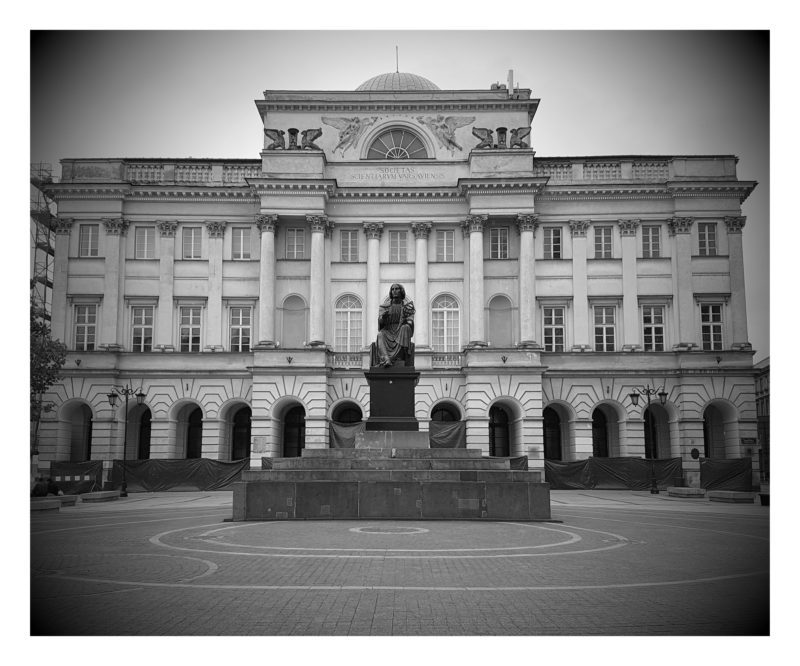
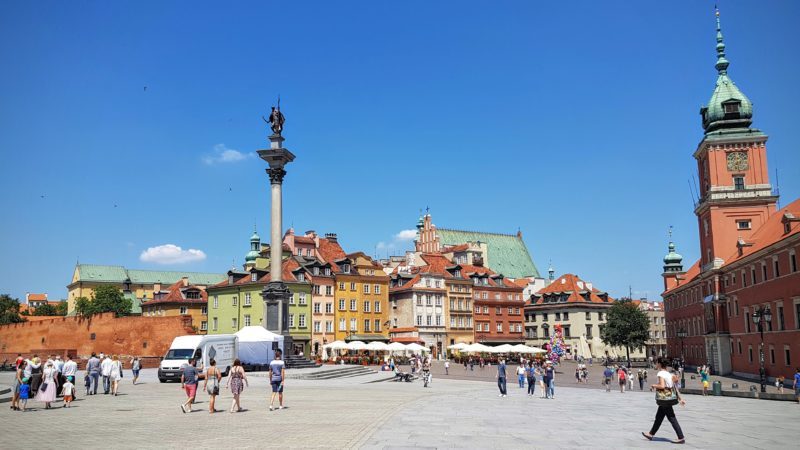
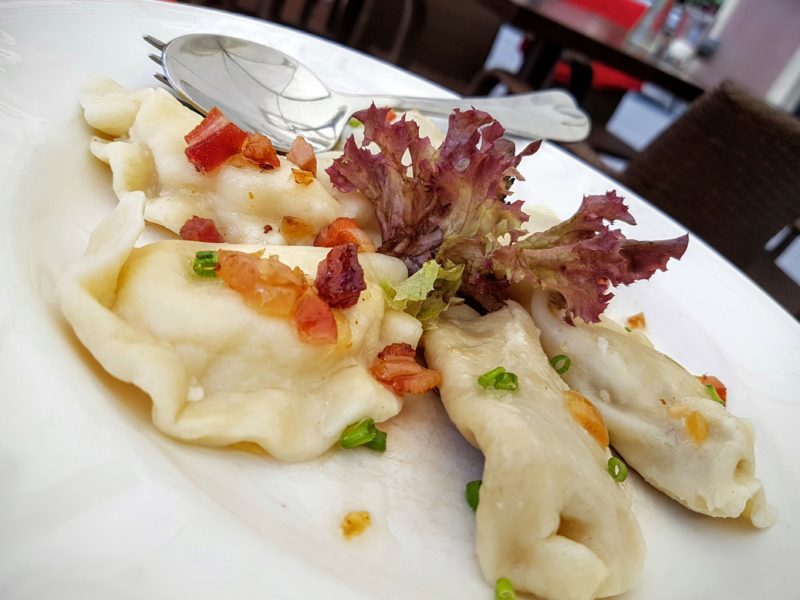
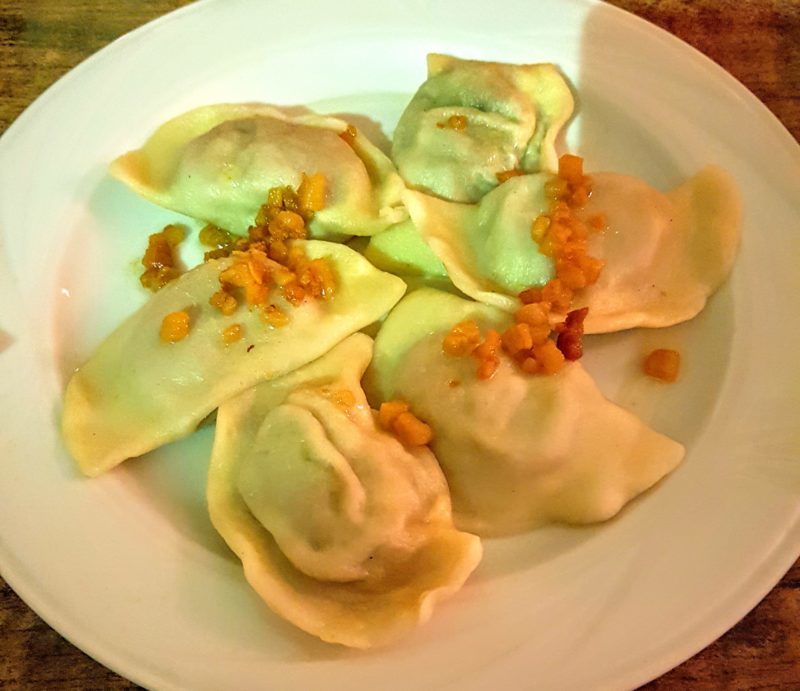
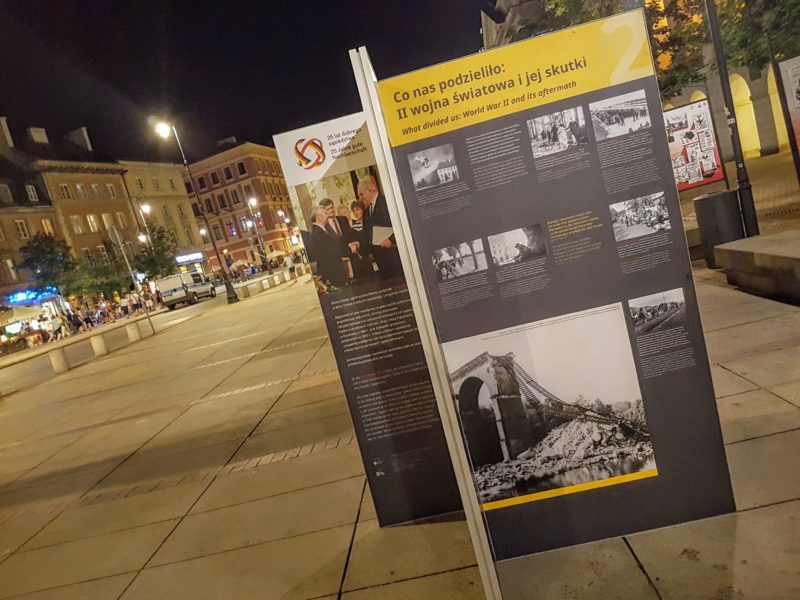
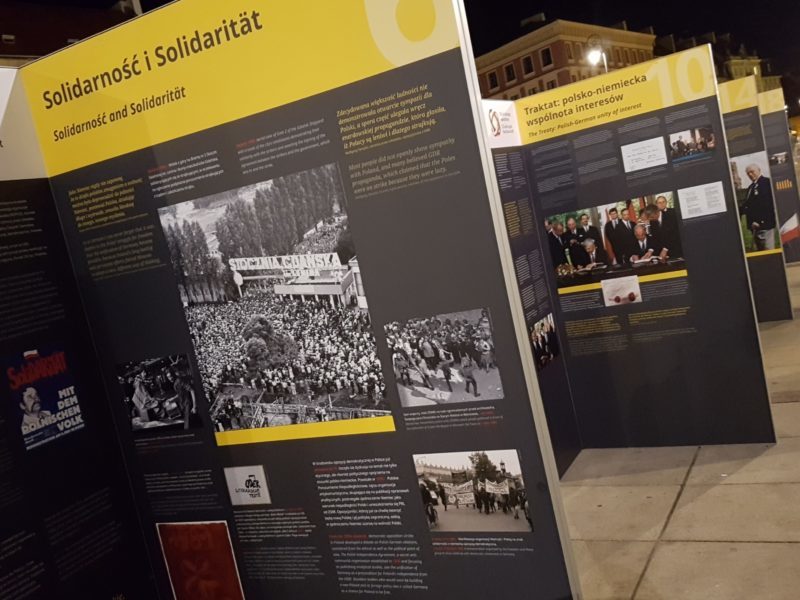
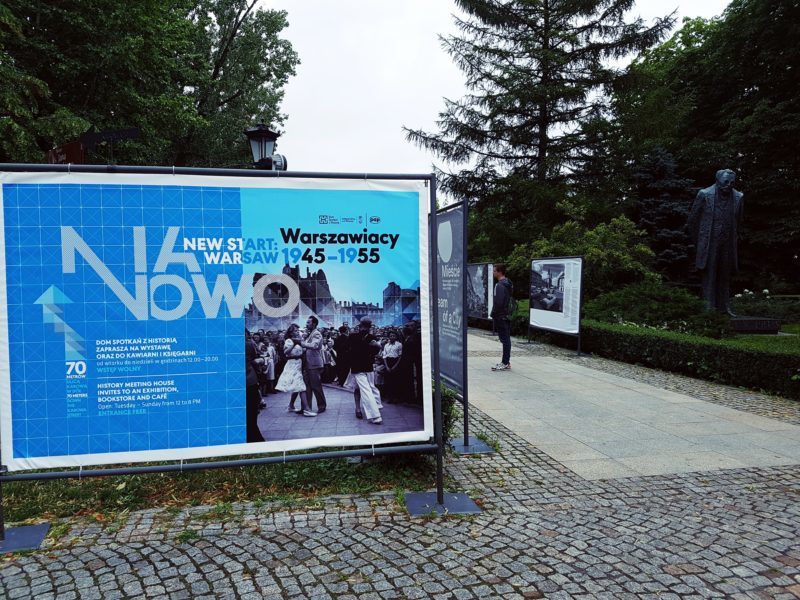
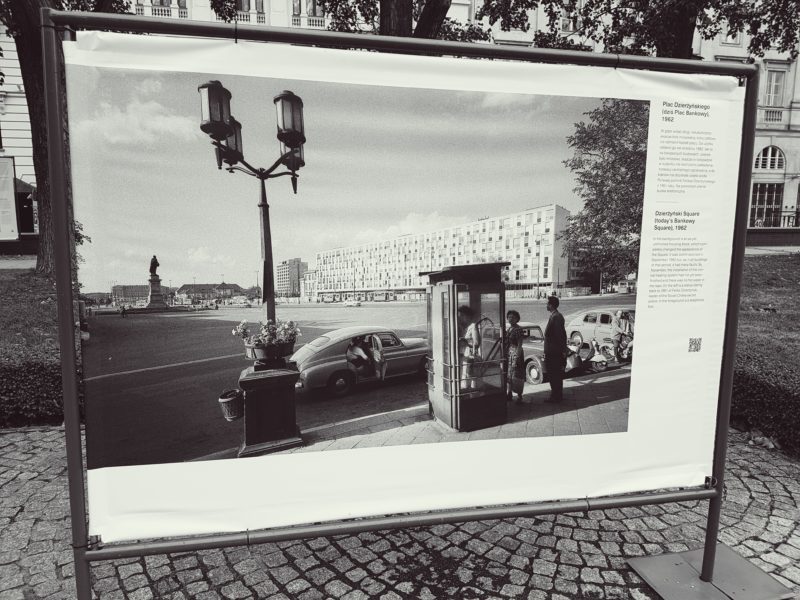
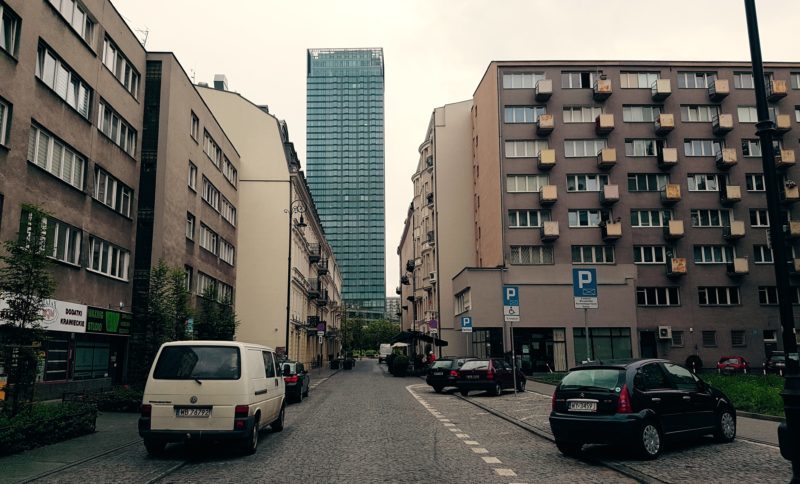
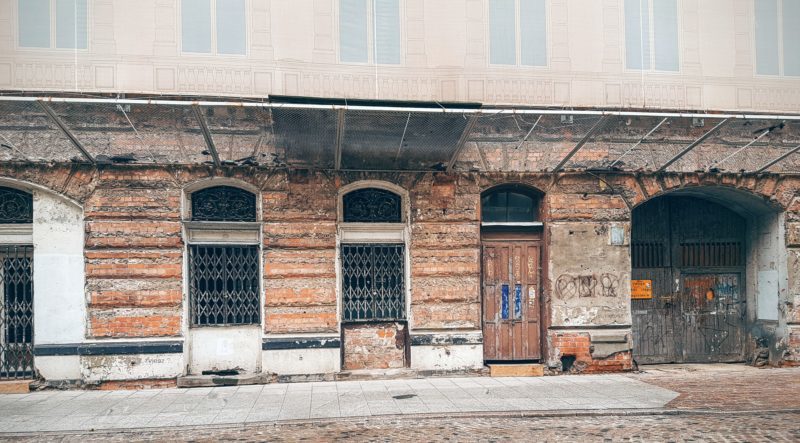
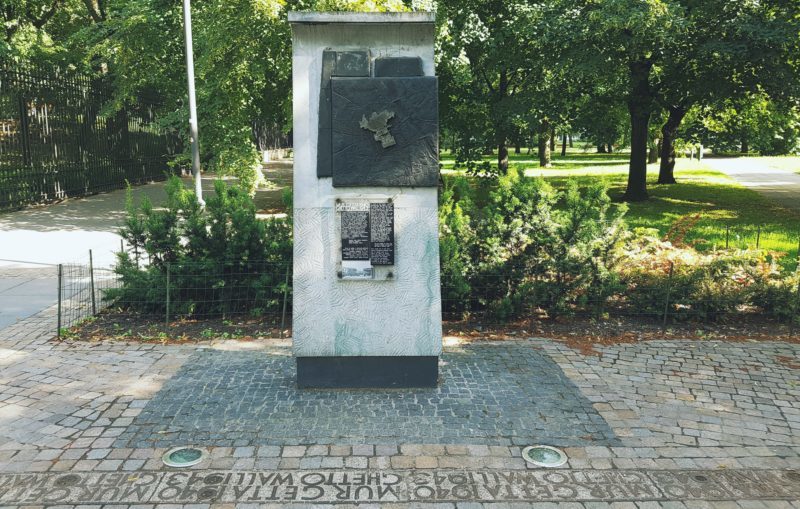
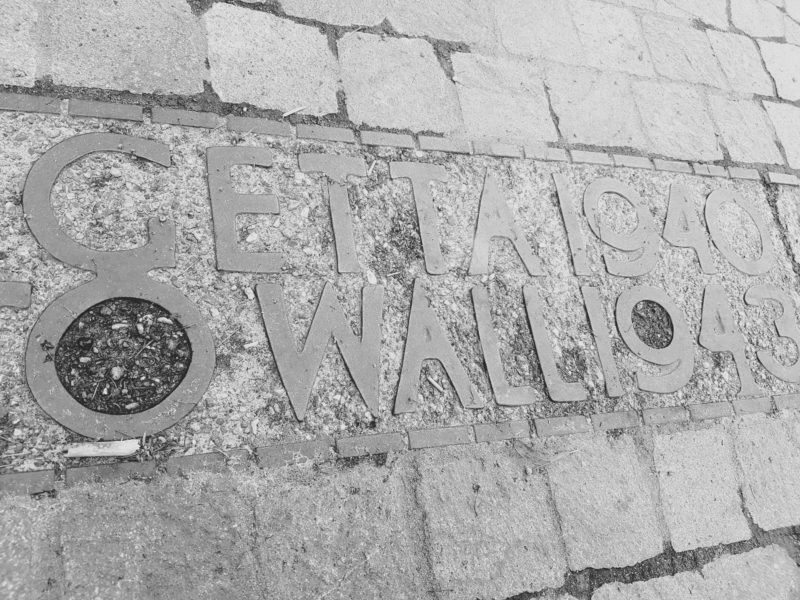
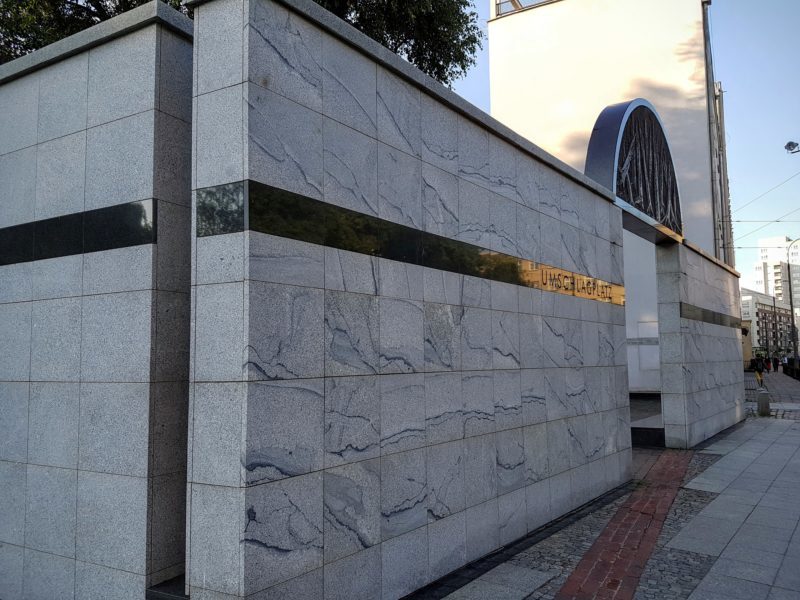

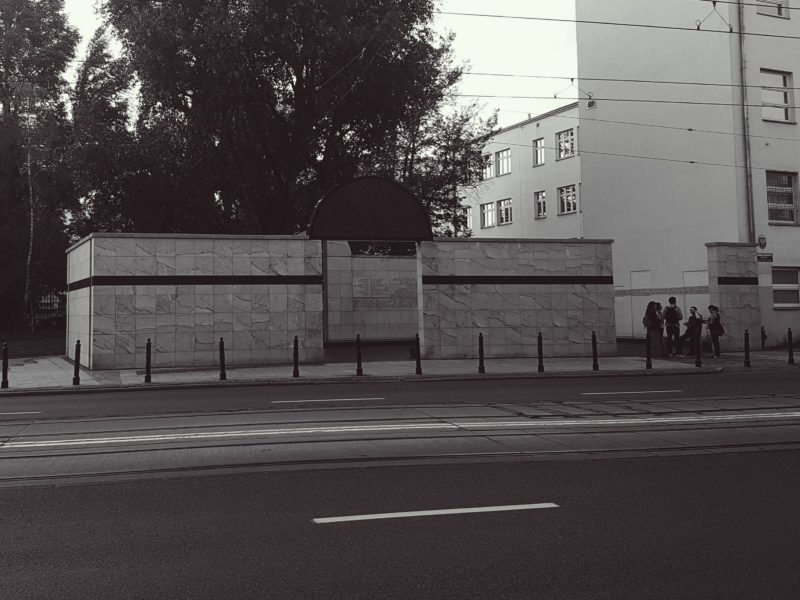
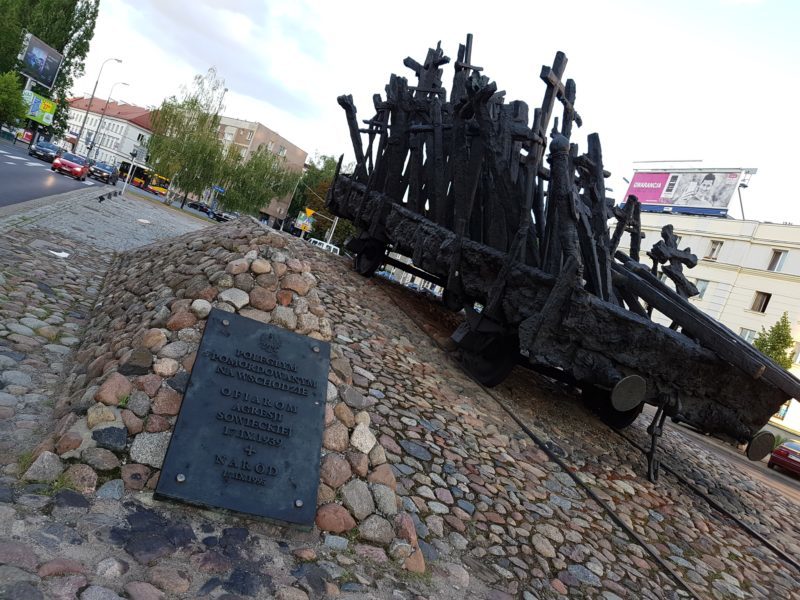
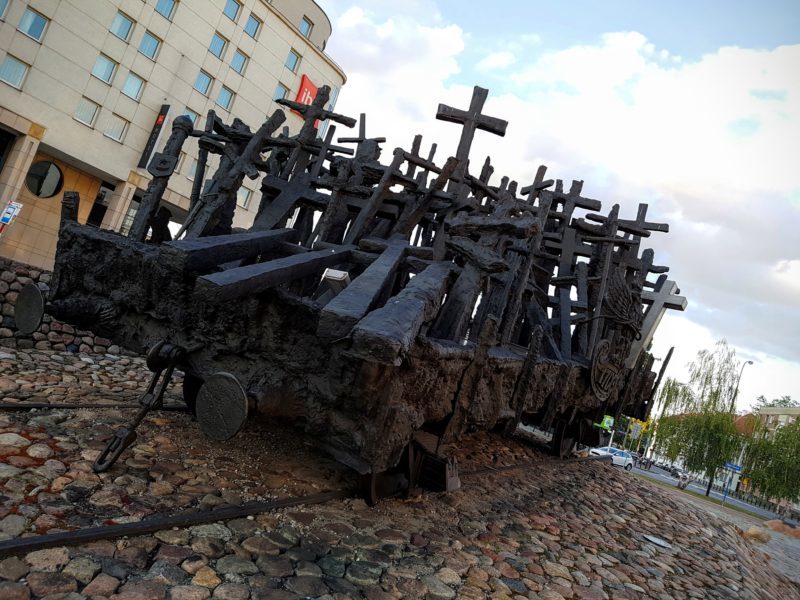
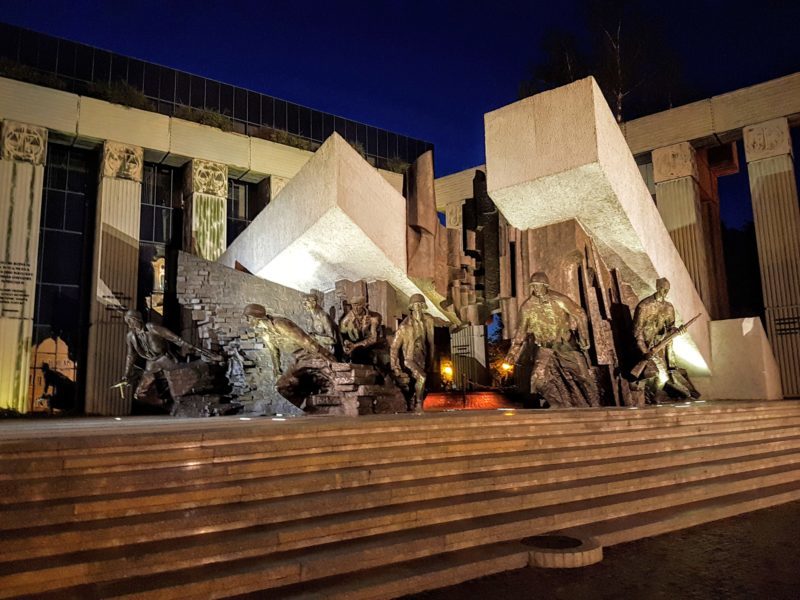
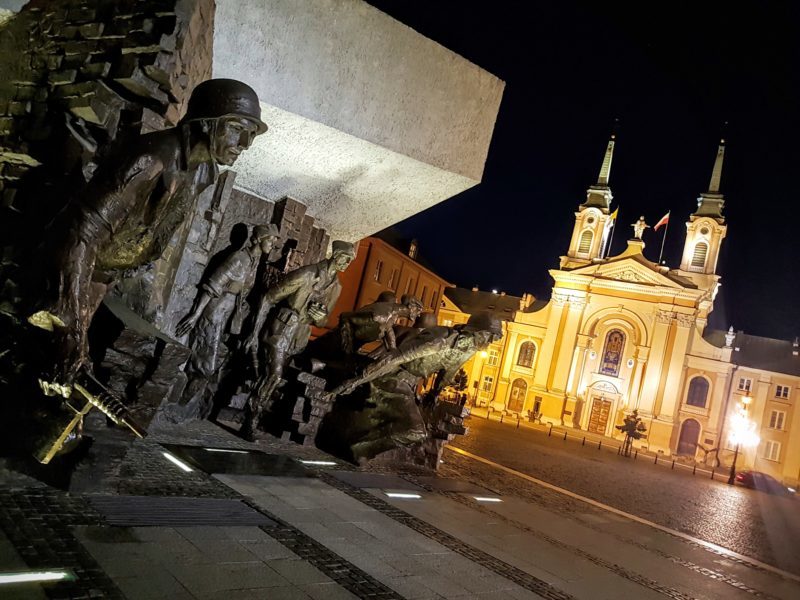
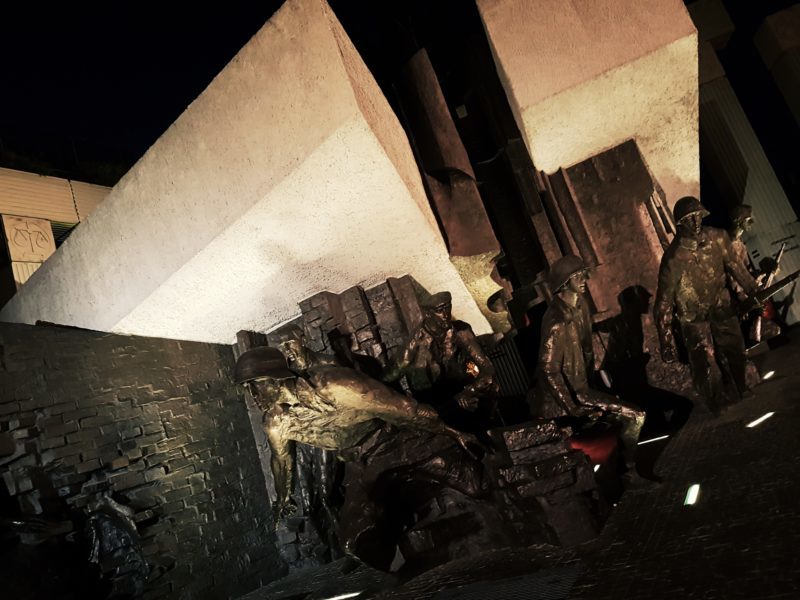
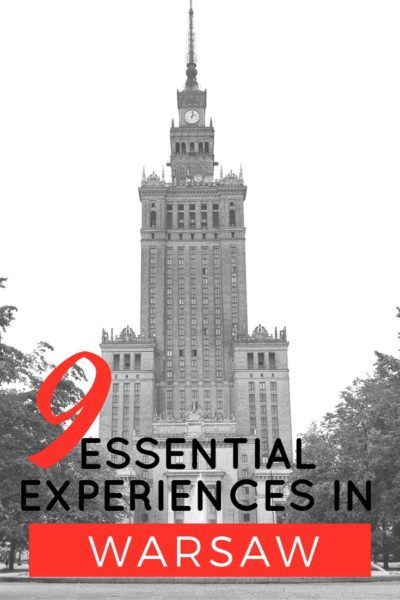
What do you mean, Free walking tours?
The concept is very common in Europe. It’s where a ‘free’ tour is advertised online or in your hotel/hostel to meet in a central location (usually Old Market Sq or an easy to find church).
These tours can be free. Most of the guides for these tours work on a tip only basis and ask that you tip them at the end for what you feel the tour was worth. This means payment is technically optional and should you not wish to pay, you don’t have to. We always tip our guides, the amount varies on their delivery, knowledge and expertise.
Thanks for all the suggestions for Warsaw 🙂 I found your blog post on Pinterest. I took an Orange Umbrella free walking tour in Warsaw today (late Aug 2017) and they are working on the building from #5 on Prozna St. I hope they leave the street level intact!
Thanks Christine I’m thrilled you found us on Pinterest. Free walking tours are a great way to find your feet in a new place. I hope they leave some of Prozna St intact after they finish all the construction.
For me an essential thing to do is having a traditional polish dinner – Polish food is incredible! I love finding new restaurants to try during my trips to Warsaw, and there are so many that I always manage to find a new one. So far my favorite restaurant in Warsaw, that I always go back to, is the Akademia Restaurant in Mokotow. They offer a perfect combination of Polish and European flavors, their food is incredibly delicious!
Great to have some local recommendations, thanks for sharing.
Great article, I will definitely use your recommendations during my next trip to Warsaw. I have visited Poland few times and I love this country! I always stay in Warsaw, because my cousins live there. Last time they took me to a great bar in downtown called Bubbles. I was so delighted. They specialize in champagnes and sparkling wines from all over the world and serve them with simple but delicious dishes. Definitely a place worth recommending:)
Thanks so much for the lovely comment, Agnes. We absolutely agree with you, we love Poland too! We didn’t realise just how much there is to see and how much history there is to learn which is why we keep returning. It sounds like we need to check out Bubbles on our next visit to Warsaw, definitely our kind of place. Thanks for the great recommendation 🙂
So much to do! We’ve been planning a trip here, so this is a perfect resource! Those memorials are breathtaking and can’t wait to see them.
Brilliant Jess, very pleased to hear this. Enjoy Poland it’s really fascinating!